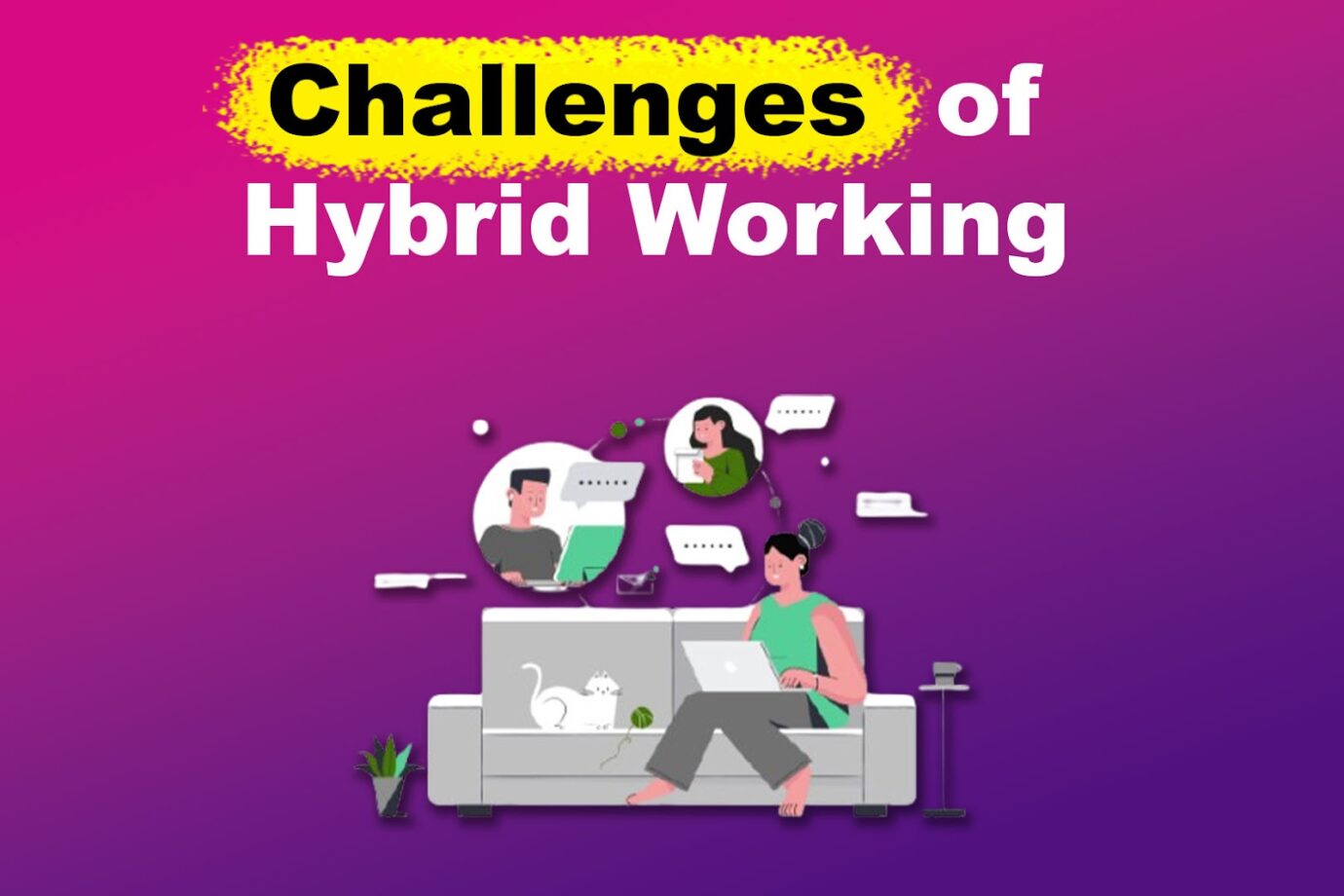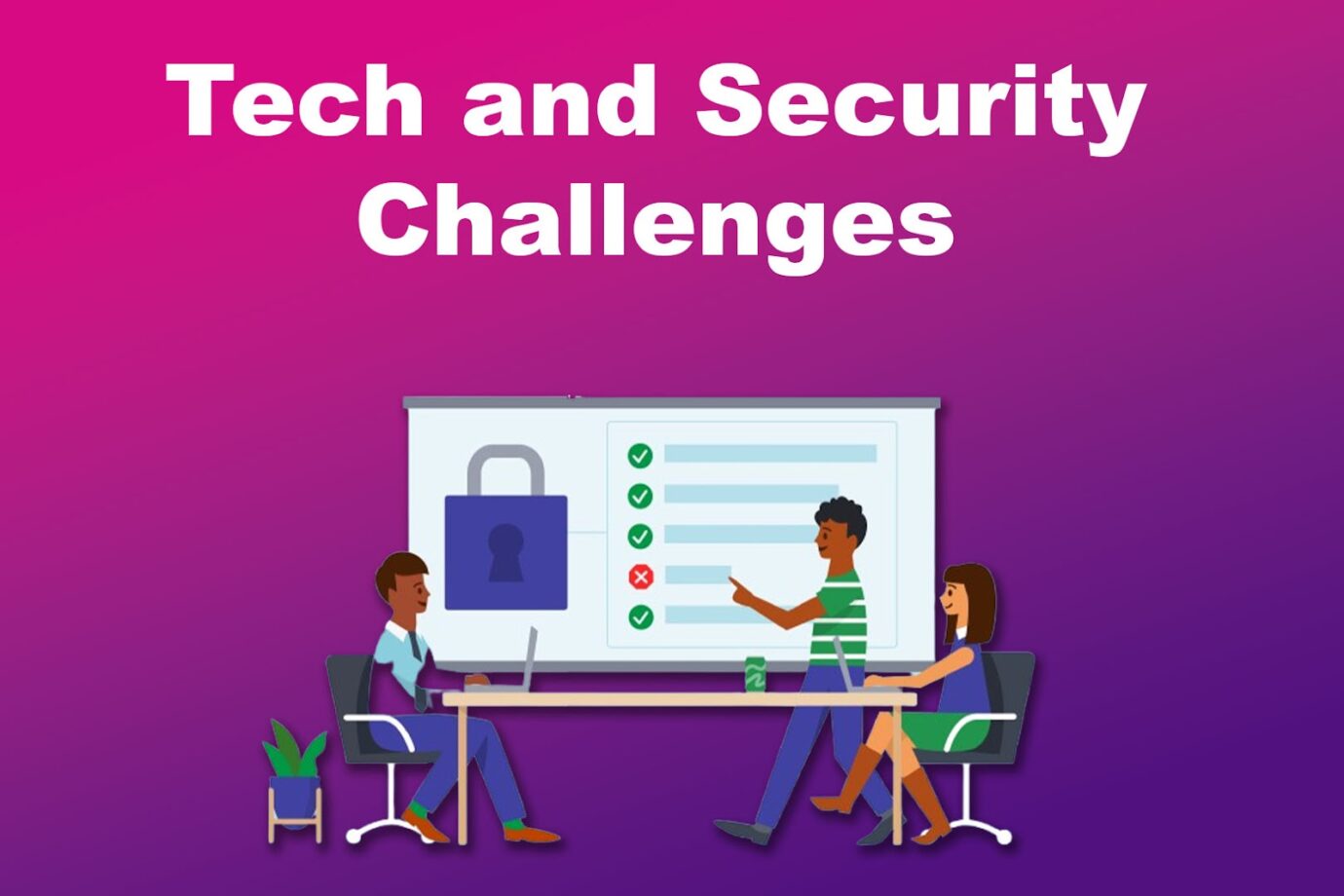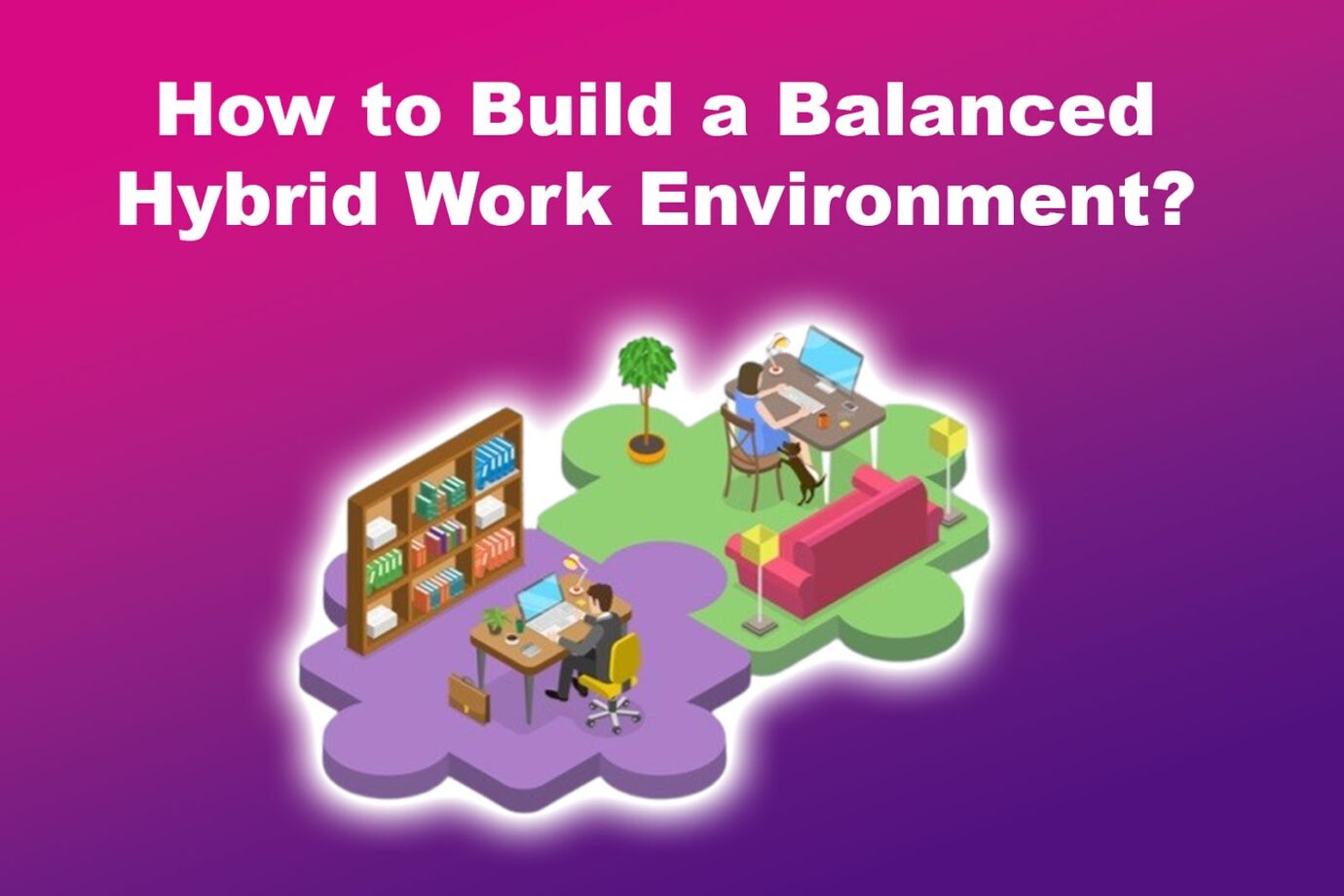The COVID-19 pandemic reshaped how we work. Remote work emerged, and many employees discovered that they liked it. It provides excellent flexibility, a characteristic highly appreciated nowadays.
Despite this, as a company manager, I do not see things from the same perspective: remote work implies losing control over many factors. That’s why many companies have been reluctant to maintain this style, pushing their employees to return to the office.

Companies have finally sought a middle ground between remote and traditional office work to solve this conflict of interest: the hybrid job model, which combines in-office and remote work arrangements.
However, managing a hybrid workforce is not without challenges. Below, we explore 11 key challenges of hybrid working and provide actionable solutions to overcome them.
11 Challenges of Hybrid Working
These are the challenges of hybrid working and the solutions you can use to fix them:
1. Onboarding Challenges
Challenge
Bringing new employees into a hybrid environment can be complicated. Making remote hires understand the company culture, make connections, or even access training resources is more challenging than in-office onboarding.
A lack of face-to-face mentorship can leave new hires unsure of company expectations. Additionally, navigating different communication platforms and workflows can be overwhelming for those unfamiliar with hybrid setups.
Solution
In this situation, a structured onboarding process is crucial. You should provide the new hires with remote-friendly training materials, virtual meet-and-greet sessions, and assigned mentors to guide them.
A mix of online and in-person onboarding activities can also help new employees feel more connected and engaged from the start. You can also encourage early participation in team discussions and company events to develop a sense of belonging.
2. Building Team Cohesion & Culture
Challenge
One of the disadvantages of hybrid working is that it can be pretty challenging to foster a strong workplace culture when employees are scattered between home and the office.
Casual conversations, team bonding, and company traditions may fade, making employees feel disconnected from the organization.
A lack of cultural alignment can produce disengagement and reduced employee loyalty. Without daily in-person interactions, it can be challenging for employees to build trust and rapport with colleagues.
Solution
You should intentionally create opportunities for team bonding. Virtual team-building activities, regular in-office collaboration days, and company-wide events can help bridge the cultural gap.
Encouraging open communication through digital tools also strengthens connections between team members. Try to recognize and celebrate achievements remotely, not just in person. With all these measures, new hires will better understand the company culture.
3. Office Overcrowding

Challenge
Because we all have similar lifestyles, it is common for most employees to want to work in the office on the same day. This can lead to overcrowding, making finding meeting rooms or quiet spaces for focused work difficult.
Employees may feel frustrated if they cannot access the necessary office resources due to insufficient planning. This will reduce productivity and cause general discomfort.
Solution
Implement an office scheduling system that allows employees to book desks or meeting spaces in advance. This will prevent the overcrowding. Encouraging staggered in-office days or fixed hybrid schedules can also help balance office occupancy.
You can also encourage your employees to optimize their office layouts to accommodate fluctuating attendance patterns better. If the office is well prepared, it could be used by different employees, so there is no need for an office for each one.
Check the ideal hybrid work schedule and practices for better flexibility.
4. Collaboration & Coordination
Challenge
Hybrid work can create coordination challenges, especially when some team members are in the office while others work remotely. Delays in decision-making, scheduling conflicts, and communication gaps can impact efficiency.
It is highly probable that work schedules misalign, giving rise to project bottlenecks. Also, remote employees may struggle to stay informed about in-office discussions and decisions.
Solution
Use project management and communication tools like Slack, Trello, or Asana to keep everyone on the same page.
Encourage your teams to document discussions and decisions to ensure remote employees stay informed. Implement regular team check-ins and hybrid-friendly meeting formats. This will also improve the coordination between in-office and remote users.
5. Impaired Relationships

Challenge
Strong professional relationships are often built through daily interactions, informal chats, and shared experiences. When employees work remotely, these natural relationship-building moments are reduced, resulting in weaker connections and potential misunderstandings.
Employees may feel isolated without social interactions, and workplace camaraderie can diminish. Ultimately, this can decrease collaboration and trust among team members.
Solution
As a manager, you should facilitate cross-team interactions to help employees build connections beyond their immediate colleagues. Encourage informal virtual catch-ups when they work remotely and coffee chats or occasional in-person gatherings when employees are at the office.
6. Hybrid Work-Life Balance
Challenge
One of the most significant risks of hybrid working is that remote work can blur the lines between personal and professional life, contributing to burnout. Some of your employees may struggle to set boundaries. They will work longer hours and may feel pressured to be available at all times.
This feeling of “constant connectivity” can create stress and reduce overall job satisfaction, affecting both productivity and mental well-being.
Solution
You should always promote a culture where employees are not obligated to respond outside of work hours. Encourage your employees to establish precise work hours and take regular breaks.
You can manage this by promoting virtual wellness tools that track screen time and productivity. These tools will help your employees manage their schedules effectively, and you will also have essential data on their productivity.
7. Managing Fairness & Visibility

Challenge
Traditional performance reviews may not work well in a hybrid setting. In-office employees often have more visibility with leadership. This can be a problem as it may cause potential biases in promotions, recognition, and opportunities.
Remote employees may feel left out of critical discussions and career advancement prospects. At the same time, managers might struggle to assess remote employees fairly versus those they see in the office regularly.
A perception of inequality can lower employee morale and reduce management trust, leading to remote workers’ disengagement.
Solution
Adopt performance-based evaluations rather than presence-based judgments to ensure equal opportunities. One way to achieve this is to hold hybrid meetings, which all employees (even those in the office) can join virtually. This will level the playing field.
You must also dedicate time to training your team leaders to track employee contributions fairly and recognize achievements regardless of work location. This will cultivate a sense of fairness.
Focus on measurable outcomes rather than physical presence. Key performance indicators (KPIs) and continuous feedback loops also ensure fair evaluations for all employees, regardless of their work location.
8. Underutilization of On-Site Resources
Challenge
Hybrid work often leaves office spaces, meeting rooms, and facilities underutilized. If that’s your company’s case, you may struggle to justify the cost of maintaining large office spaces that remain empty for much of the week.
Unoccupied office space can be a financial burden and may generate inefficient use of company resources.
Solution
Optimize your office space by introducing hot-desking, reducing office size, or repurposing unused areas for collaboration hubs.
You might be underutilizing your on-site resources, and you may not have known it. Conducting regular assessments can help your company make informed decisions about office investments.
9. Tech and Security Challenges

Challenge
One of the challenges of a hybrid workforce is that it requires your employees to access company systems from various locations. This will increase the security risks.
You may encounter many security challenges if you have not implemented good IT support for remote employees. Cybersecurity threats, inconsistent internet access, and a lack of standardized tech setups can give you headaches.
Solution
Provide secure VPN access for all your employees. This will require an initial investment, but it is worth it. Also, try to implement multi-factor authentication to reduce data leaks.
Remember to provide cybersecurity training for employees. Many internet threats result from technological ignorance. Ensure that remote workers also have company-approved hardware and IT support. Investing in cloud-based security solutions can further enhance data protection.
10. Maintaining Productivity & Accountability
Challenge
Tracking employee productivity in a hybrid setting is more challenging than in a traditional office. Some employees may struggle with distractions at home, while others may overwork without clear boundaries.
Managers may also face difficulties in ensuring accountability without micromanaging employees.
Solution
Shift from monitoring hours worked to evaluating outcomes. Setting clear goals, regular check-ins, and productivity tracking tools can help you ensure accountability while allowing employees to work flexibly.
And finally, remember to encourage your employees to set personal goals instead of focusing on “filling in all the working hours” like a robot. You can also tell them to self-monitor progress to motivate them to enhance their productivity.
Learn the five methods to track your remote workers.
11. Compliance & Legal Issues
Challenge
Managing compliance across a hybrid workforce can also be complex. You must navigate labor laws, tax regulations, and remote work policies that differ across regions. This can be a real thorn in your side.
Solution
Before setting the new work model, consult legal experts to ensure hybrid work policies comply with all regulations. Be prudent to prevent legal complications. One way to do this is to keep a clear documentation record and conduct regular audits.
Forbes also explains how to overcome six significant challenges of hybrid working.
How to Build a Balanced Hybrid Work Environment

Now that you know about the possible hybrid work environment challenges and how to overcome them, it is time to take action.
The first thing you need to know is that you cannot find the right balance in hybrid work without strategic planning. That’s why we are providing you with five key strategies to create a sustainable and effective hybrid workplace:
- Create Clear Hybrid Work Policies.
To ensure team alignment, define attendance expectations, communication norms, and performance measurement criteria. Review and adjust policies regularly as needed. - Invest in Technology.
Equip your team with collaboration tools, secure networks, and productivity software to support seamless hybrid operations. Providing IT support ensures a smooth workflow and reduces technical disruptions. - Encourage Equal Participation.
Design meetings and decision-making processes to fairly include both remote and in-office employees. Rotating leadership roles in discussions ensures everyone’s voice is heard. - Promote Flexibility.
Allow employees autonomy in scheduling their hybrid workdays, balancing personal needs with business objectives. Offering flexibility improves job satisfaction and productivity. - Boost a Strong Company Culture.
To maintain engagement, organize regular team-building activities, recognition programs, and networking opportunities. Remember that prioritizing company values helps employees stay connected to the organization’s mission.
Read the 5Cs checklist to manage a hybrid team on the Harvard Business Publishing page.
Finding the Right Balance for Hybrid Work
Hybrid work is here to stay but comes with its fair share of challenges. From onboarding struggles to maintaining fairness and visibility, organizations must proactively address these issues to create a seamless work environment.
Companies can overcome these hybrid work challenges by implementing structured policies, investing in technology, and fostering team cohesion.
Ultimately, the key to an effective hybrid work model lies in balance—ensuring flexibility while maintaining structure, promoting autonomy while encouraging collaboration, and leveraging technology while preserving human connections.